U.S. Army Air Defense Artillery Branch Video made by Judy Oman.
FORT SILL, OK, UNITED STATES
06.24.2020
Video by Donald Herrick
U.S. Army Air Defense Artillery School
U.S. Army Air Defense Artillery Branch Video made by Judy Oman.
FORT SILL, OK, UNITED STATES
06.24.2020
Video by Donald Herrick
U.S. Army Air Defense Artillery School
Two crews competed in a morning and afternoon session to see who could load an AIM-9 on each side of the aircraft the fastest and with the fewest mistakes.
This was the quarterly weapons load competition held Aug. 10 at Eglin Air Force Base, Fla.
Photos credit: Eglin AFB, August 17, 2020
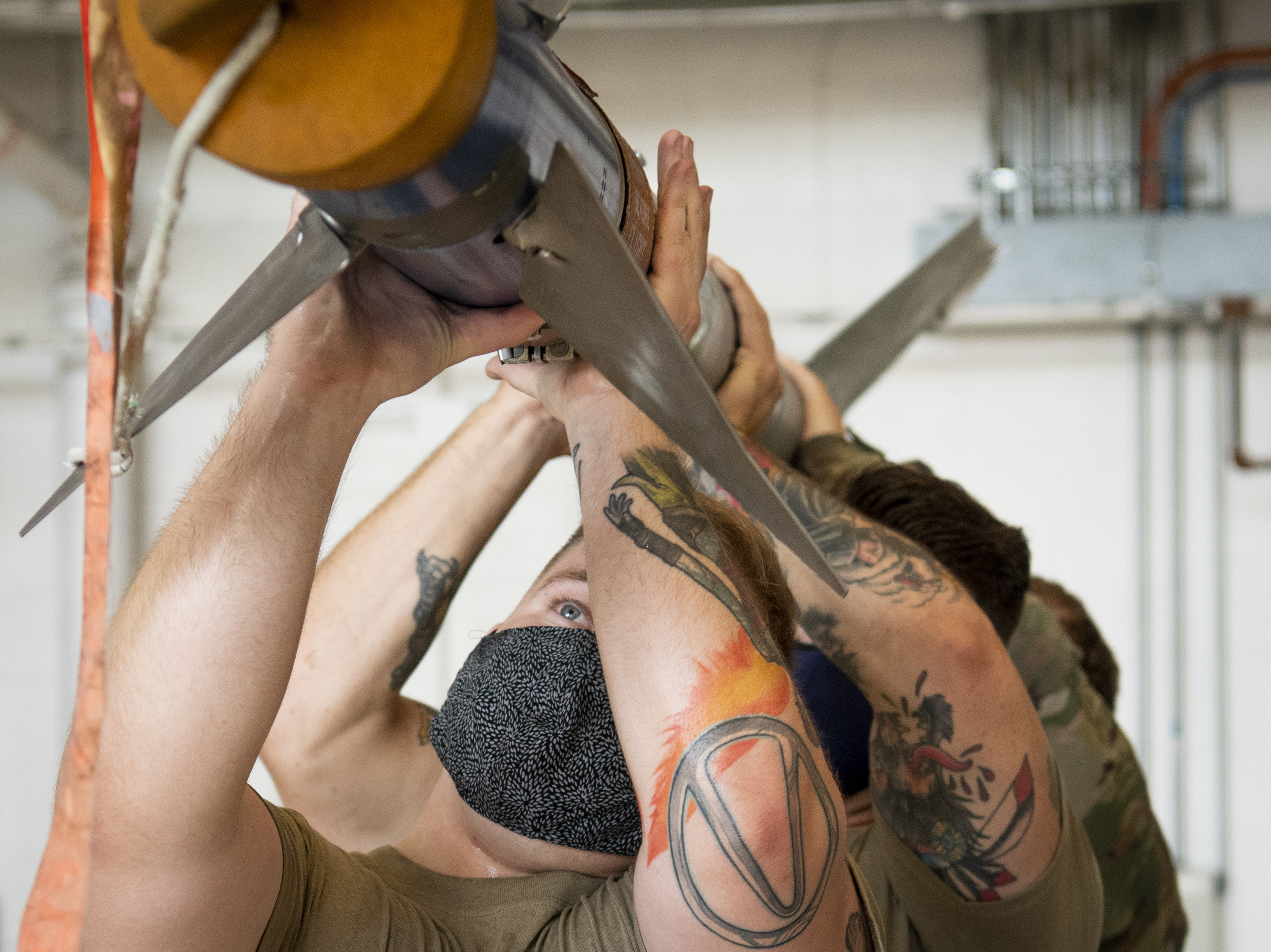

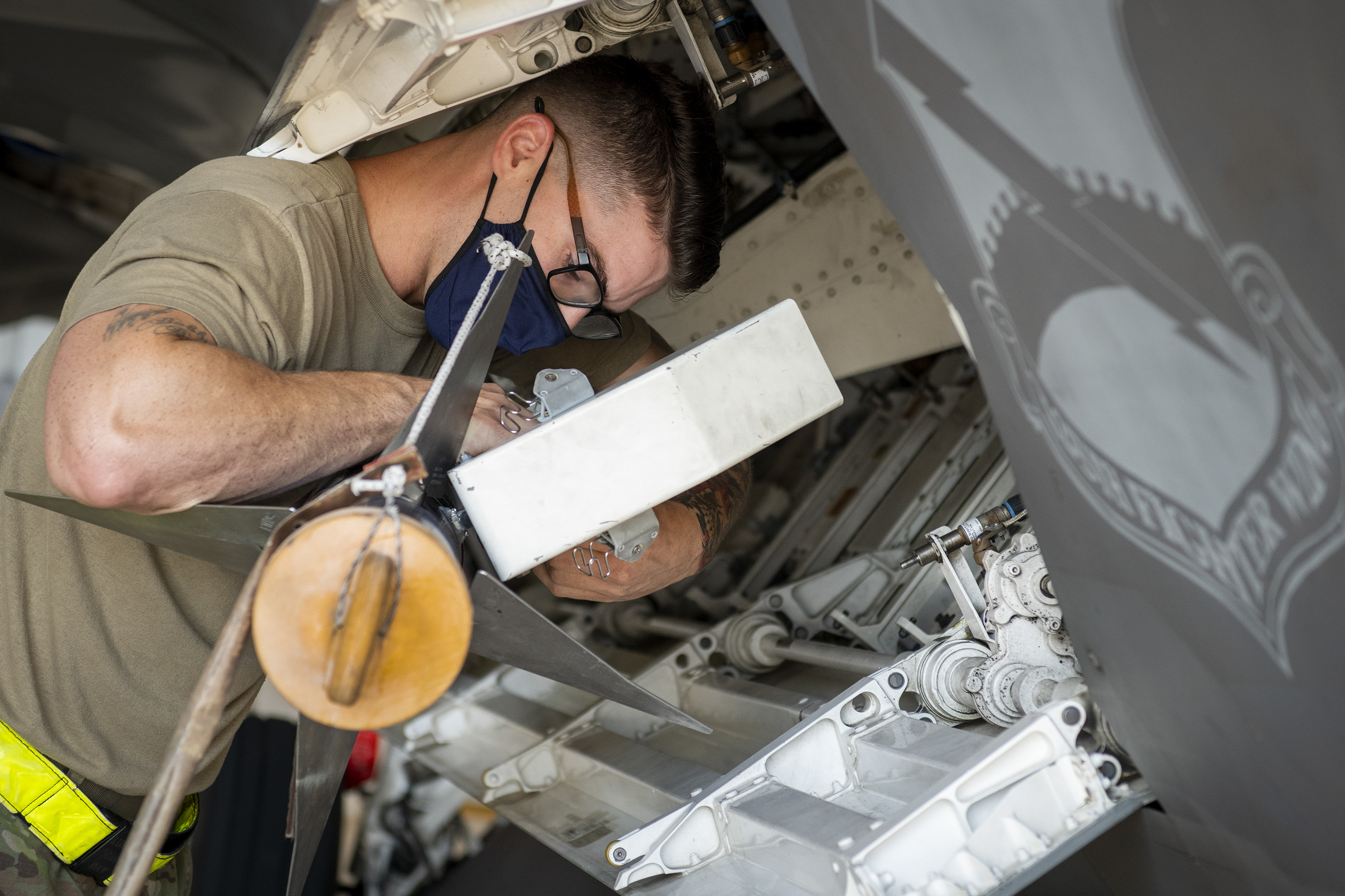
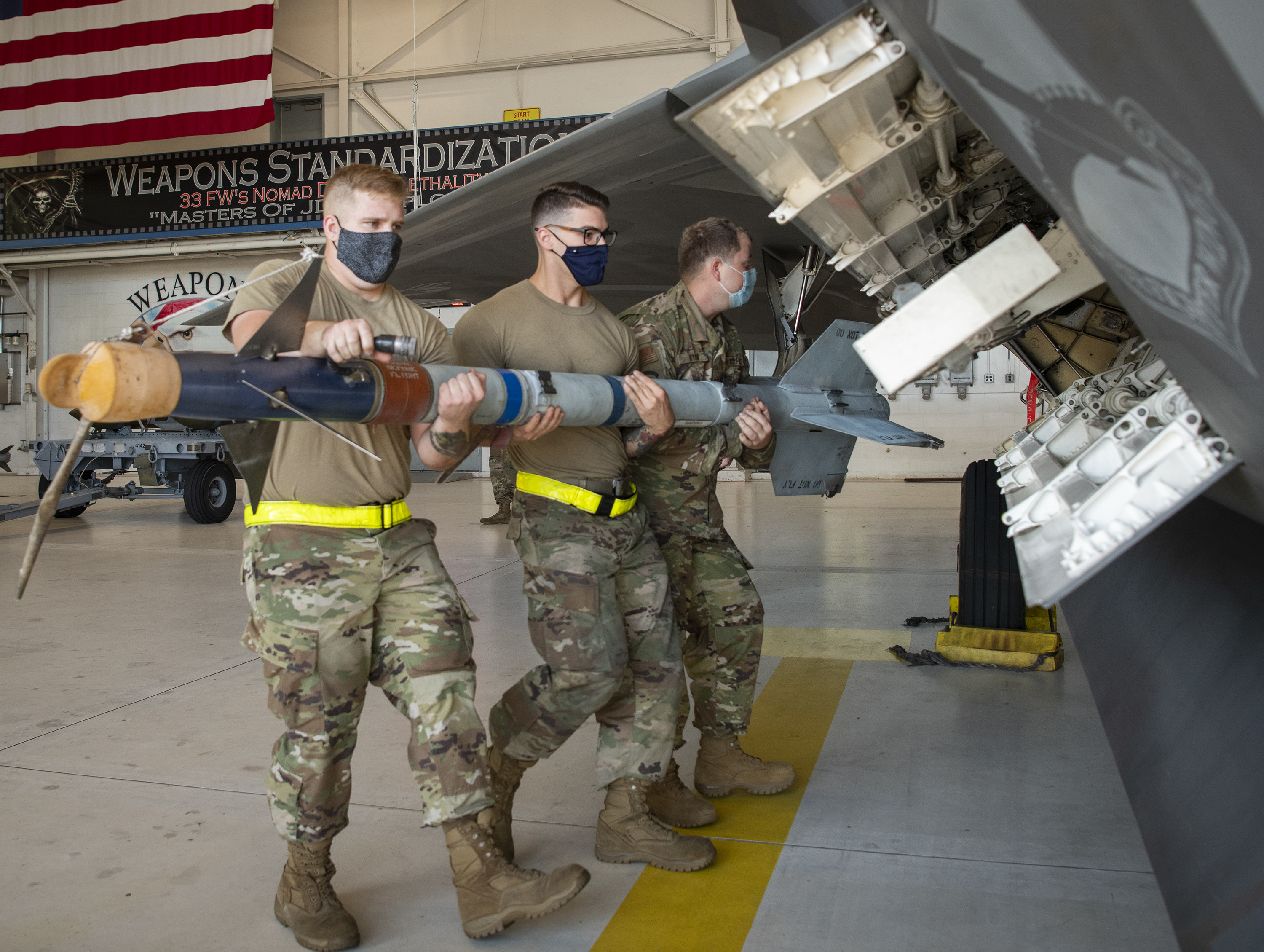
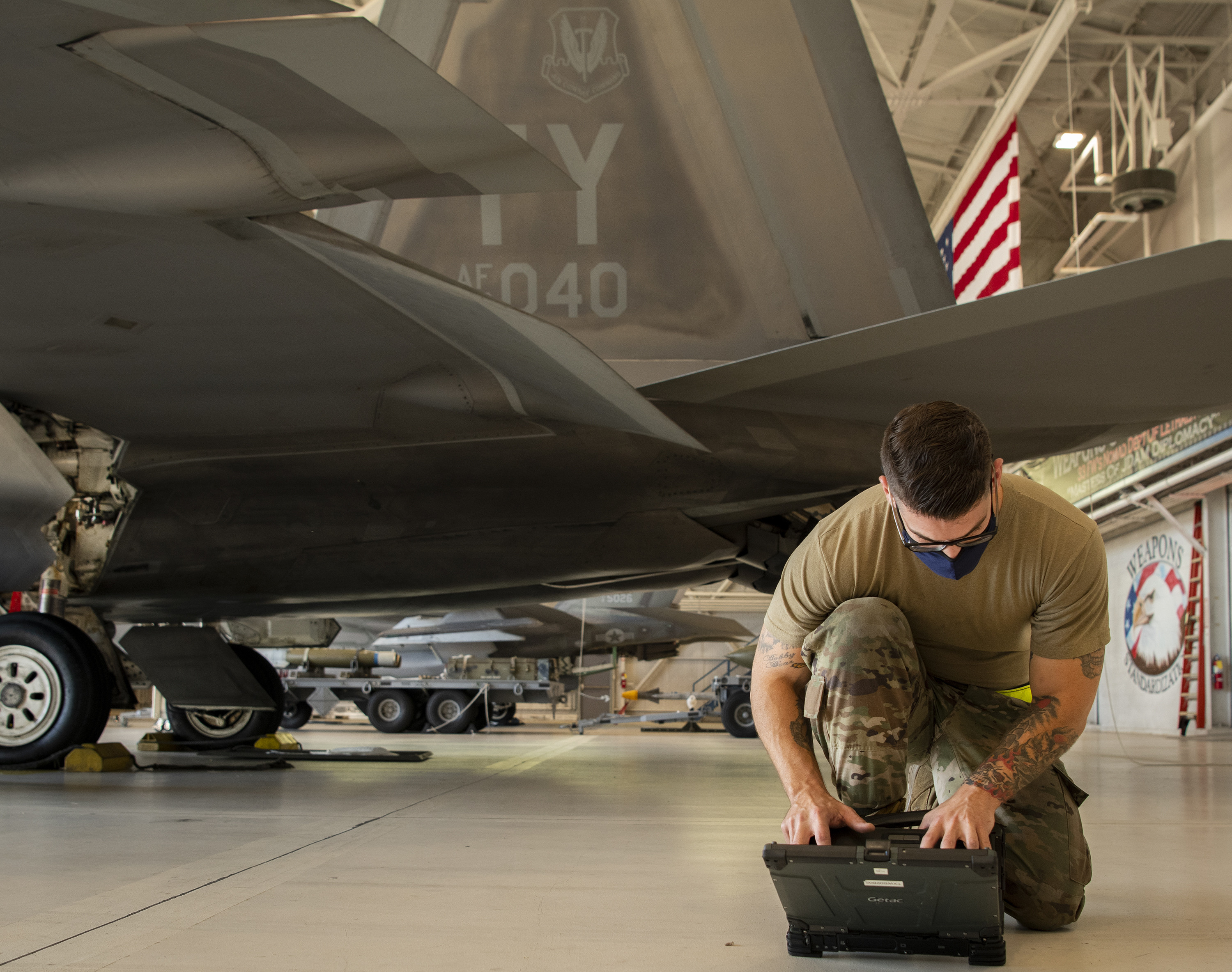
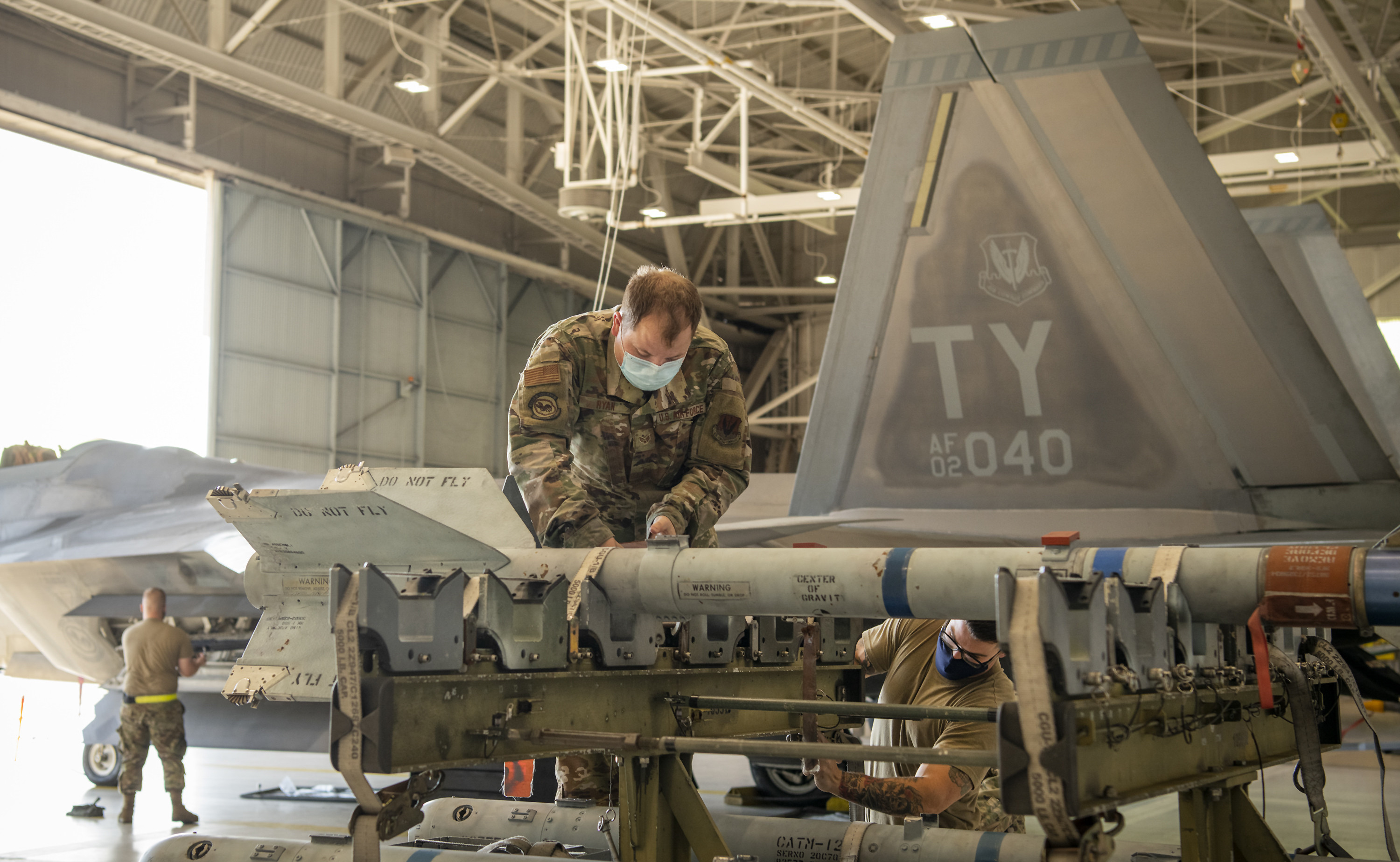
By defenceWeb
The first three Su-35 fighter jets for Egypt’s air force have been seen flying in Russia, months after it emerged production had started at the Gagarin Aircraft Plant in Komsomolsk-on-Amur.
On 22 July, photos emerged of five aircraft in flight, with serials 9210, 9212 and 9214 visible. They were spotted at Novosibirsk Tolmachevo Airport in central Russia apparently en route from the factory 3 600 km away. In early May, satellite imagery appeared to show four of the aircraft on the ground at the Komsomolsk-on-Amur factory in eastern Russia. Their colour scheme matches that of Egyptian MiG-29Ms in service.
It is expected the aircraft will be delivered this year.
According to the Stockholm International Peace Research Institute, Egypt ordered 24 Su-35 aircraft for $2 billion in 2018.
In March 2019 Russian newspaper Kommersant said the contract involves several dozen of the fighters, which will supplement the MiG-29M/M2 fighters Egypt is receiving and help replace obsolete MiG-21s and J-7s.
Kommersant said deliveries are due to take place from 2020/2021. Egypt’s order was apparently spurred on by the performance of the aircraft over Syria, where it was deployed by the Russian Air Force.
Both China and Indonesia have ordered Su-35s, with China receiving its last batch in late 2018. Indonesia has ordered 11 of the type and China 24.
The Su-35 is one of the latest evolutions of the Su-27 ‘Flanker’ and first flew in February 2008, after which it was put in production for the Russian Air Force – service entry was in 2014. Compared to its predecessors, the Su-35 features new avionics including the Irbis phased array radar with a range of 400 km and more powerful AL-41F1S engines (14 500 kg of thrust) with thrust vectoring control.
The aircraft has a maximum takeoff weight of 34 500 kg and a maximum range of 3 600 km on internal fuel. Payload is 8 tonnes on 12 hardpoints in addition to a single GSh-30-1 30 mm cannon. The Su-35 can deploy air-to-air missiles of up to 300 kilometre range, and can carry the heavy Oniks anti-ship cruise missile, as well as a multitude of air-to-ground weaponry.
Over the last decade, Egypt has taken delivery of large amounts of hardware from Russia. According to the Stockholm International Peace Research Institute, this includes Tor-M1 (SA-15), Igla-S (SA-24), S-300VM (Antey-2500/SA-23) and Buk-M2 (SA-17) surface-to-air missile systems, ten Mi-17V-5 helicopters and a Project 1241/Tarantual fast attack craft as well as air-to-air and anti-tank guided missiles. Egypt is also receiving 46 Ka-52K attack helicopters and 50 MiG-29M/M2 fighter jets from Russian manufacturers.
This article was published by defenceWeb on July 31, 2020.
The featured photo: Su-35s at the Komsomolsk-on-Amur factory in eastern Russia.
The 480th Expeditionary Fighter Squadron support Polish Armed Forces Day at Warsaw, Poland, August 15, 2020.
Recently, Secretary of State Pompeo signed an agreement with his Polish counterparts moving some of the American forces which have been in Germany to Poland.
A Deutsche Welle story highlighted the agreement as follows:
Under the pact, another 1,000 US troops will be sent to Poland in addition to the 4,500 soldiers already stationed there. The deal also grants the US access to Polish military installations and allows for the modernization of existing facilities and capabilities in Poland.
“This is going to be an extended guarantee: a guarantee that in case of a threat our soldiers are going to stand arm-in-arm,” Polish President Andrzej Duda said on Saturday during the signing ceremony.
“It will also serve to increase the security of other countries in our part of Europe.”
Several military commands will also be moved out of Germany, among them the US Army V Corps overseas headquarters. It will be based in Poland from next year.
In July, the US Department of Defense announced plans to withdraw around 12,000 US military personnel from Germany, reducing its troop presence there from 36,000 to 24,000. Nearly 5,600 service members will be redeployed to NATO countries, including Poland, with 6,400 to return to the US.
The featured photo: Military members from the United States, Poland, United Kingdom, Romania, and Croatia gather for a group photo during Polish Armed Forces Day at Warsaw, Poland, August 15, 2020. (U.S. Air Force photo by Senior Airman Melody W. Howley)
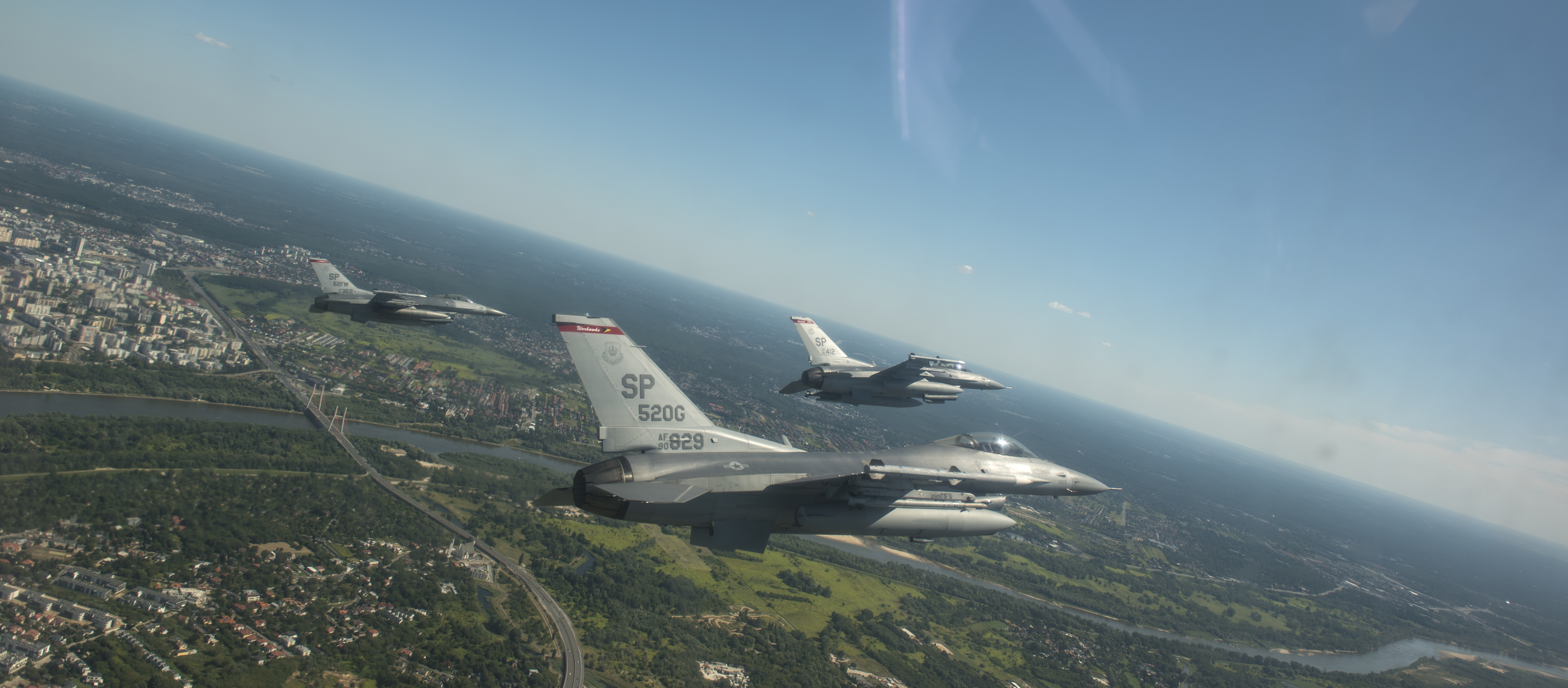




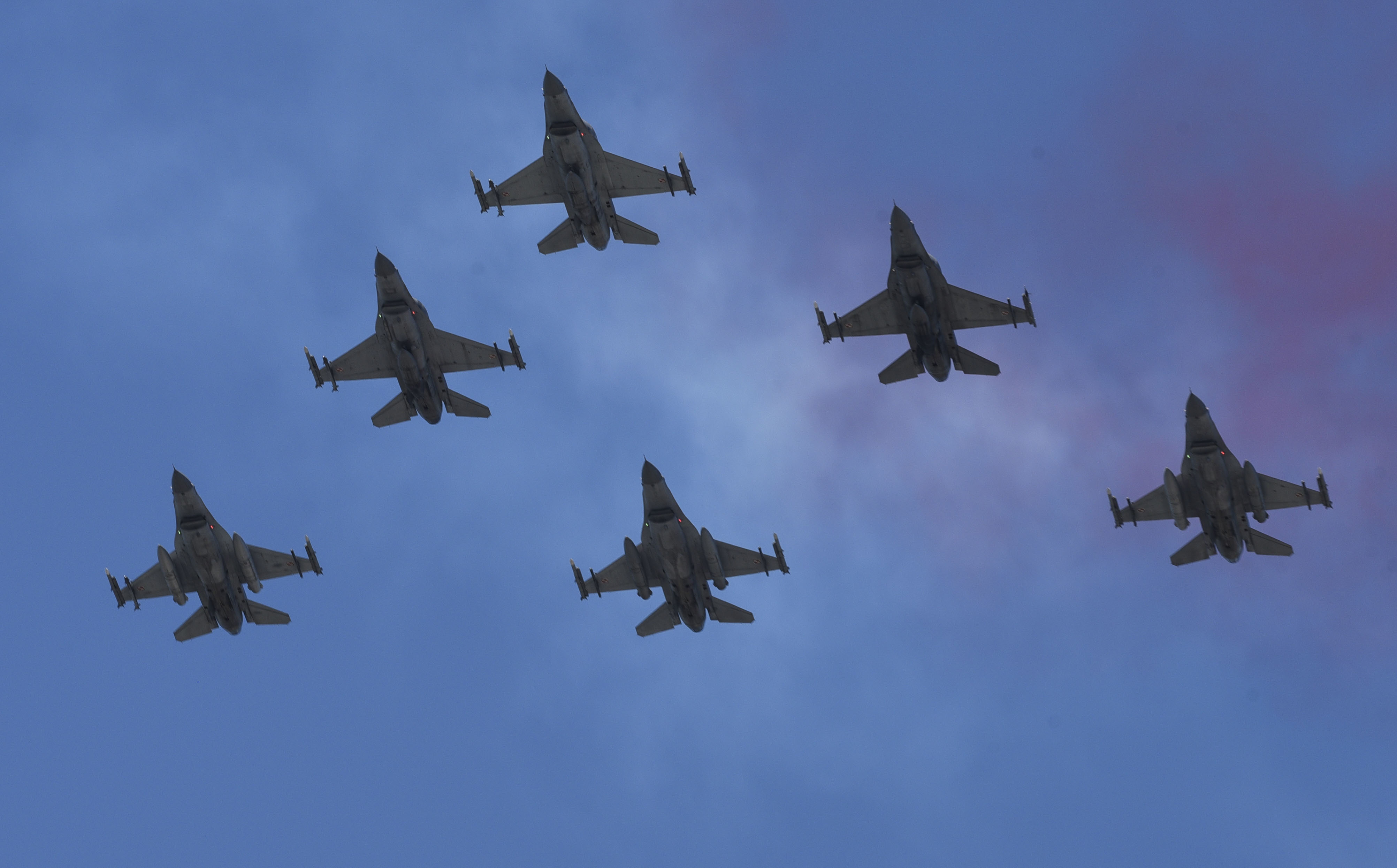
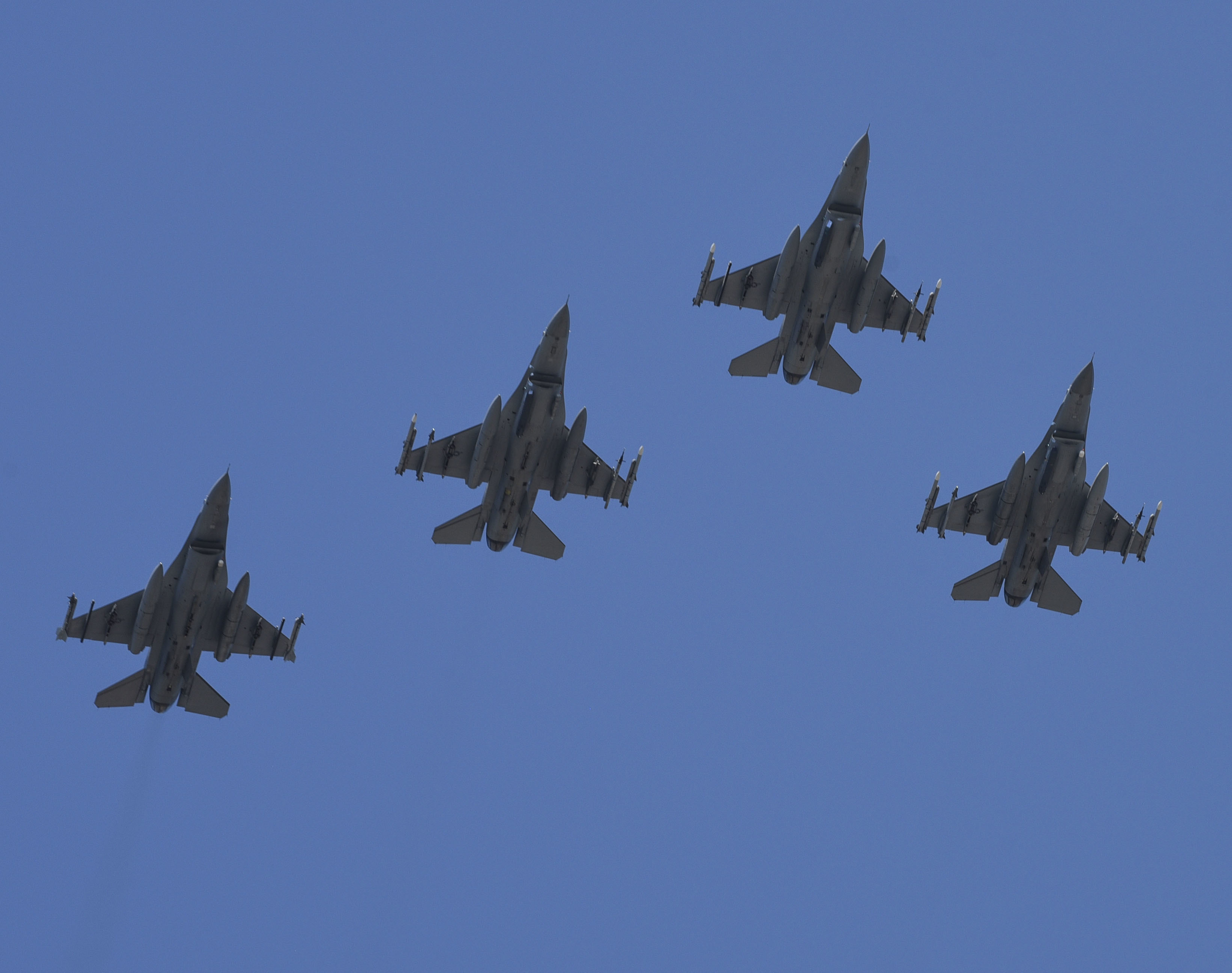

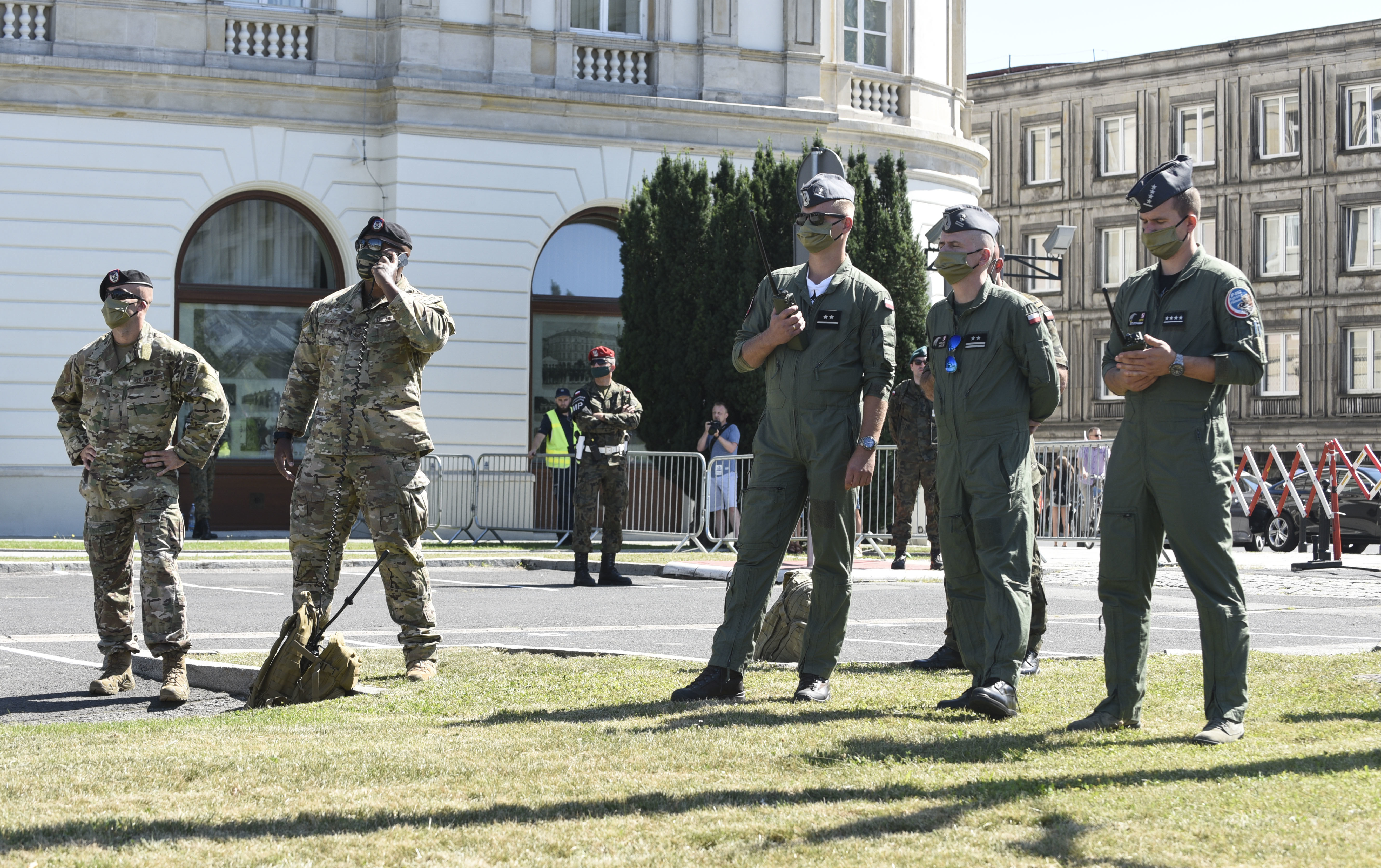
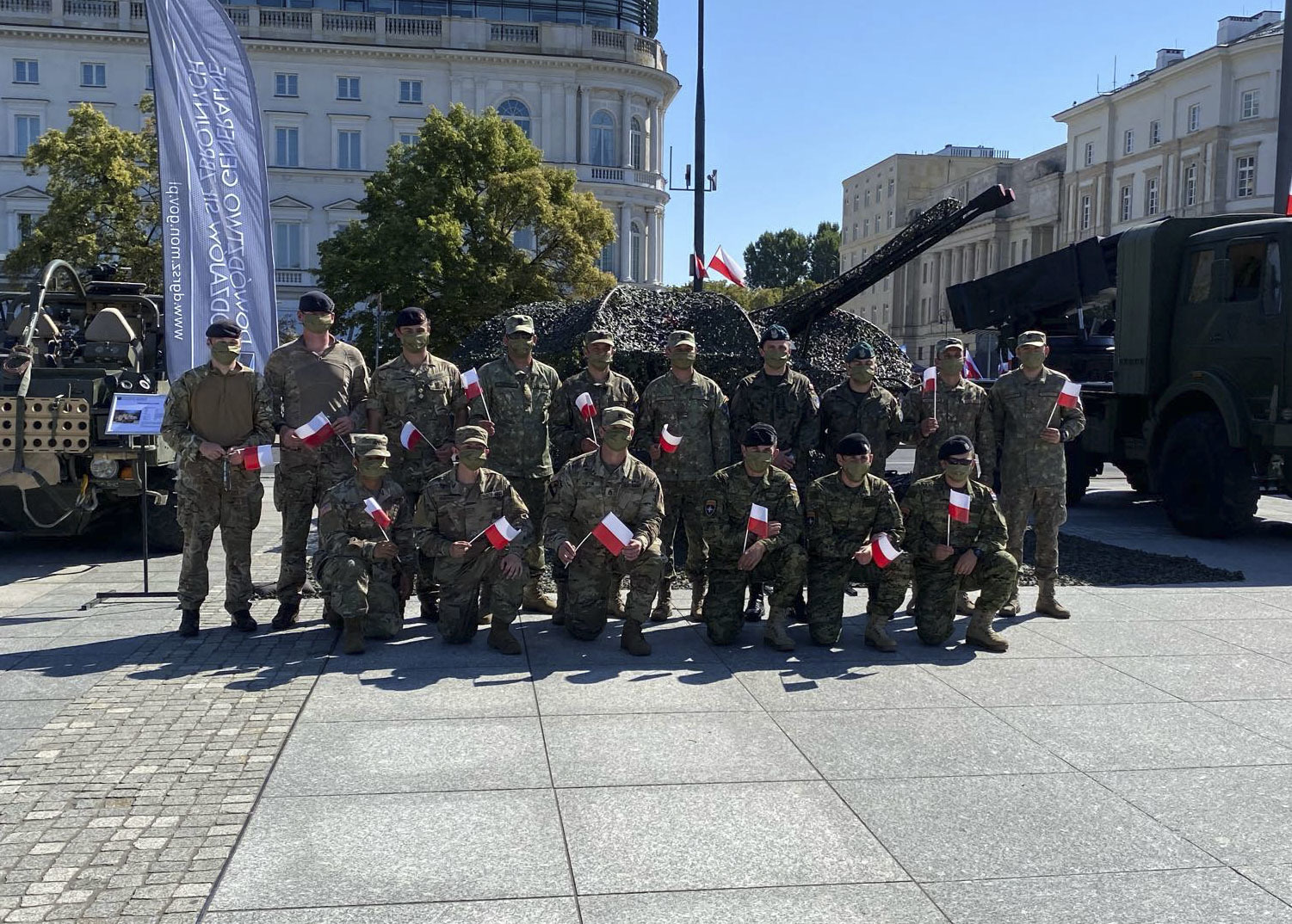
By Robbin Laird
After Germany retired its specially modified signals intelligence Atlantique maritime patrol aircraft, there was a clear gap in the capabilities of Germany to provide for either national or NATO capabilities in this area.
This was done in the immediate post-Cold War environment where the United States and NATO nations were increasingly focused on out of area operations, and reduced dramatically their capabilities to defend against direct military threats to NATO Europe.
Leaving a huge ISR gap with the retirement of its airborne manned SIGINT asset, the Germans focused on replacing this aircraft with an unmanned variant of the Global Hawk, with German designed and produced payloads, or the EuroHawk.
This program was a joint venture between Northrop Grumman, the prime contractor of Global Hawk, and Airbus Defence and Space, the producer of the payloads and of the ground mobile stations.
But in what one publication called “death by certification,” the Euro Hawk flew, and was performing on a technical level, but regulatory barriers killed the program in May 2013.
The program was killed precisely at the moment when the return of direct defense in Europe was about to be abundantly clear to everybody with a pulse.
With the seizure of Crimea, perceptions began to change.
In an interview I did with Brigadier General (ret.) Rainer Meyer zum Felde, he highlighted the impact of these events on Germany and NATO. Meyer zum Felde is currently a Senior Fellow at the Institute for Security Policy Kiel University (ISPK). From July 2013 to September 2017, he was the Senior Defence Advisor at the Permanent Delegation of Germany to NATO in Brussels and the German Representative in NATO’s Defence Policy and Planning Committee.
In 2013 it was increasingly clear that after a 20-year long set of missions at the lower or mid-level COIN and crisis management operations, NATO had lost core skills to provide NATO with the necessary set of forces and capability for high-intensity warfare.
“Although we still talked about the need for sustained collective defense from the mid-1990s on, we failed to underpin direct defense with usable capabilities, larger combat formations and a realistic defense planning process.
“Most European nations decreased their level of readiness, eliminated forces which they believed they no longer needed, notably heavy ones, and turned their forces the kind of expeditionary forces recommended and requested by the Americans and the Brits.
“We certainly followed suit in Germany.
“And the last two decades we no longer prioritized the forces for high-intensity warfare.
“Instead, we used the German armed forces formations since the mid-1990s as a pool for generating contingents for sustained crisis management operations abroad, while shrinking the entire posture to a much lower size and decreasing the defense budget from about 3% to 1.2% of GDP.”
But Russia today is not the Soviet Union. It poses a different military set of threats including hybrid warfare, gray zone activities, increased reliance on the threat to use limited nuclear strikes, and shaping a maneuver air-ground force backed by long range strike systems, notably land, air and sea-based missiles.
In this environment, gaining ISR dominance is a key part of ensuring that crisis management is effectively pursued, and in a very timely fashion.
It is clear from the interviews I have done in Europe, the United States and Australia, that the return of high-end warfare is occurring in the context of new approaches to ISR-enabled C2 for mobile engagement forces.
As one senior US Navy Admiral has put it: “The next war will be won or lost by the purple shirts. You need to take ISR enablement seriously, because the next fight is an ISR fight.”
Notably, the German MoD mutated the EuroHawk into the Pegasus program.
The objective of the Pegasus program has been to deliver situational awareness to allow Germany to tailor military and diplomatic responses during peacetime and crisis.
PEGASUS is unarmed and would provide the strategic component of Germany’s and NATO’s SIGINT capability roadmap
Based on a 2017 request, the US Government offered a Letter of Offer and Acceptance (LOA) in August 2018 for a foreign military sales procurement. After one extension, the current LOA expired in late 2019, requiring MOD to update the LOR for a restated offer in 2020 which they have not done to date.
Interestingly, one of the objections raised against the Triton derivative which Pegasus is, were many of the same arguments made against EuroHawk with regard to the challenge of unmanned systems flying in European airspace.
But now that the NATO AGS system is doing precisely that, one wonders how credible this argument is.
Even more troubling is the disconnect between the discussion of Pegasus in Germany and that of FCAS.
As I noted earlier:
Germany is committed to the joint Future Combat Air System.
A key part of that plan is to work the connected force with sovereign payloads.
That would seem to highlight the importance of adding the high flying German enabled payload on their version of the Global Hawk, which is what the Pegasus program was working to do.
But apparently this is being abandoned by the German Ministry of Defence and the reason stated is even more troubling.
One of the reasons noted is the challenge of flying Pegasus in European air space.
If this is true, one would ask how the FCAS is going to be tested and trained in real air space as opposed to simulators?
And how then will the FCAS combat cloud work its connectivity magic in a world of civilian communications and the standup of the European 5G network?
The current plan in Germany is to abandon Pegasus and pursue a manned Air SIGINT mission with the Global 6000 where the prime contractor would be a sensor company with no prime contractor experience with regard to overall aircraft integration and certification of an integrated platform.
These solutions are radically different.
But how best to compare them in terms of what their acquisition would mean for the Bundeswehr and the evolution of its future capabilities?
In the next article, I will compare the two platform choices from this perspective.
Platforms, Concepts of Operations and Defense Decisions: The German Case
The U.S. Space Force’s Global Positioning System (GPS) constellation provides unprecedented position and timing accuracy to the warfighter.
Since the inception of GPS, it has become a global utility with commercial use far outweighing military use.
Air traffic control, banking, farming, and cellular networks all depend on uninterrupted GPS coverage.
06.24.2020
Video by Bradley Bowman
Air Force Research Laboratory
An MV-22B Osprey, attached to the Blackjacks of Air Test and Evaluation Squadron Two One (HX-21), is spend working with the amphibious transport dock ship USS New York (LPD 21), July 20, 2020.
New York is operating in Atlantic Ocean in support of Naval operations to maintain maritime stability and security in order to ensure access, deter aggression and defend U.S., allied and partner interests.
This Navy Osprey is assigned to the test and evaluation squadron at Pax River.
USMC Ospreys are engaged as well.
The CMV-22B will give the US Navy much greater flexibility in working distributed operations in support of the fleet, then they had with the fixed wing C-2 COD aircraft.
In a recent visit to North Island, we discussed this flexibility with the Commander of the Osprey squadrons in the US Navy.
According to Capt. Dewon “Chainsaw” Chaney, the Commander of COMVRMWING (or Fleet Logistics Multi-Mission Wing),the first squadron VRM-30 was stood up prior to the creation of the Wing and its first aircraft arrived in June 2020. Captain Chaney then noted that this October, the fleet replacement squadron, VRM-50, will be stood up. It will take this squadron two years until they will be able to train new pilots.
The counterpart to VRM-30 will be VRM-40 but all three squadrons will be under the COMVRMWING. The third squadron will be based on the East Coast.
Captain Chaney concluded: “I do believe that the Navy is really going to appreciate the capabilities that the CMV-22 is going to bring to the strike group, and they’re going to want it to do more.”
(U.S. Navy photo by Mass Communication Specialist 2nd Class Lyle Wilkie/Released)
In the video below, the first CMV-22B Osprey assigned to Fleet Logistics Multi-Mission Squadron (VRM) 30 prepares to land at Naval Air Station North Island. VRM 30 was established in late 2018 to begin the Navy’s transition from the C-2A Greyhound, which has provided logistics support to aircraft carriers for four decades, to the CMV-22B, which has an increased operational range, greater cargo capacity, faster cargo loading/unloading, increased survivability and enhanced beyond-line-of-sight communications compared to the C-2A.
06.22.2020
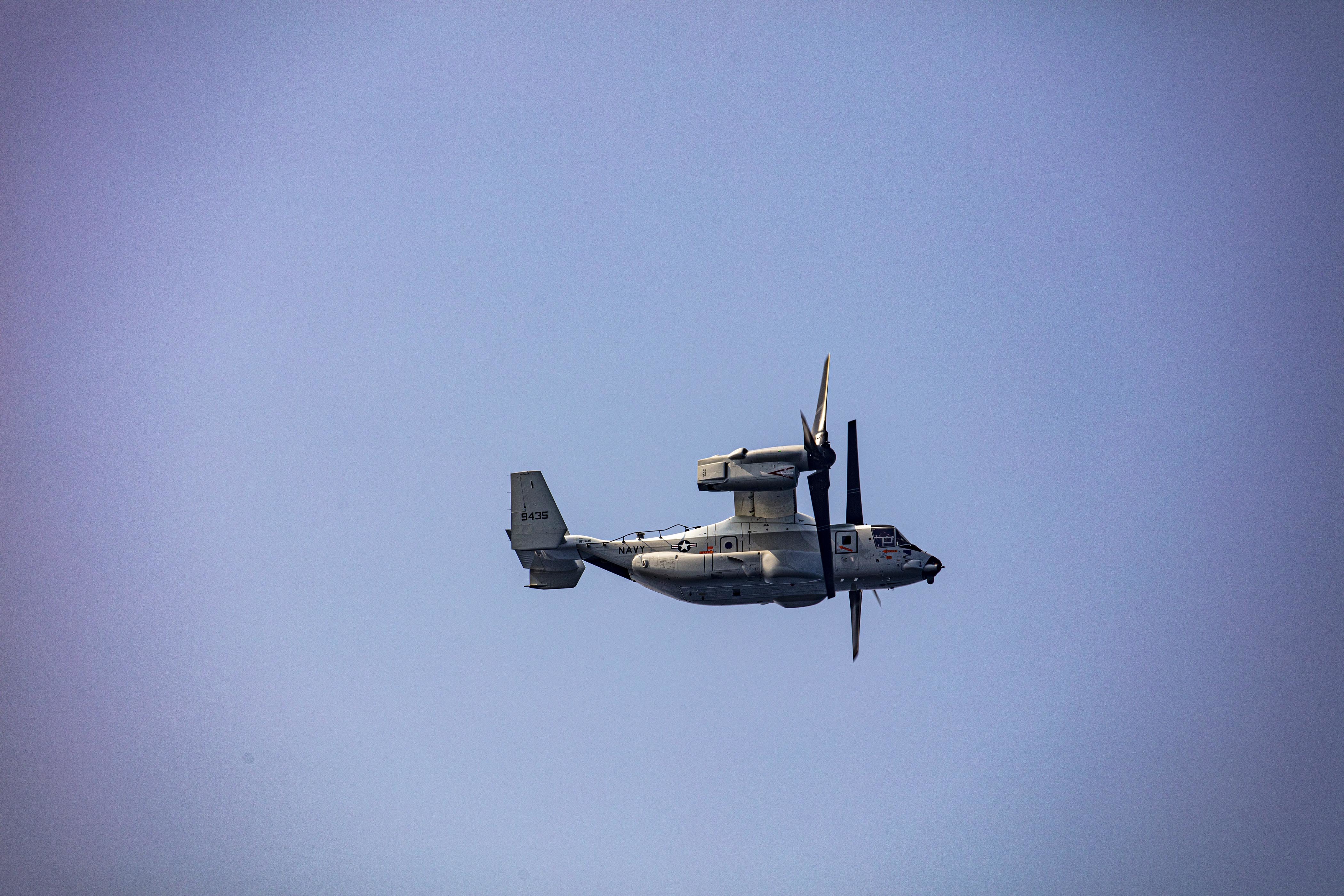


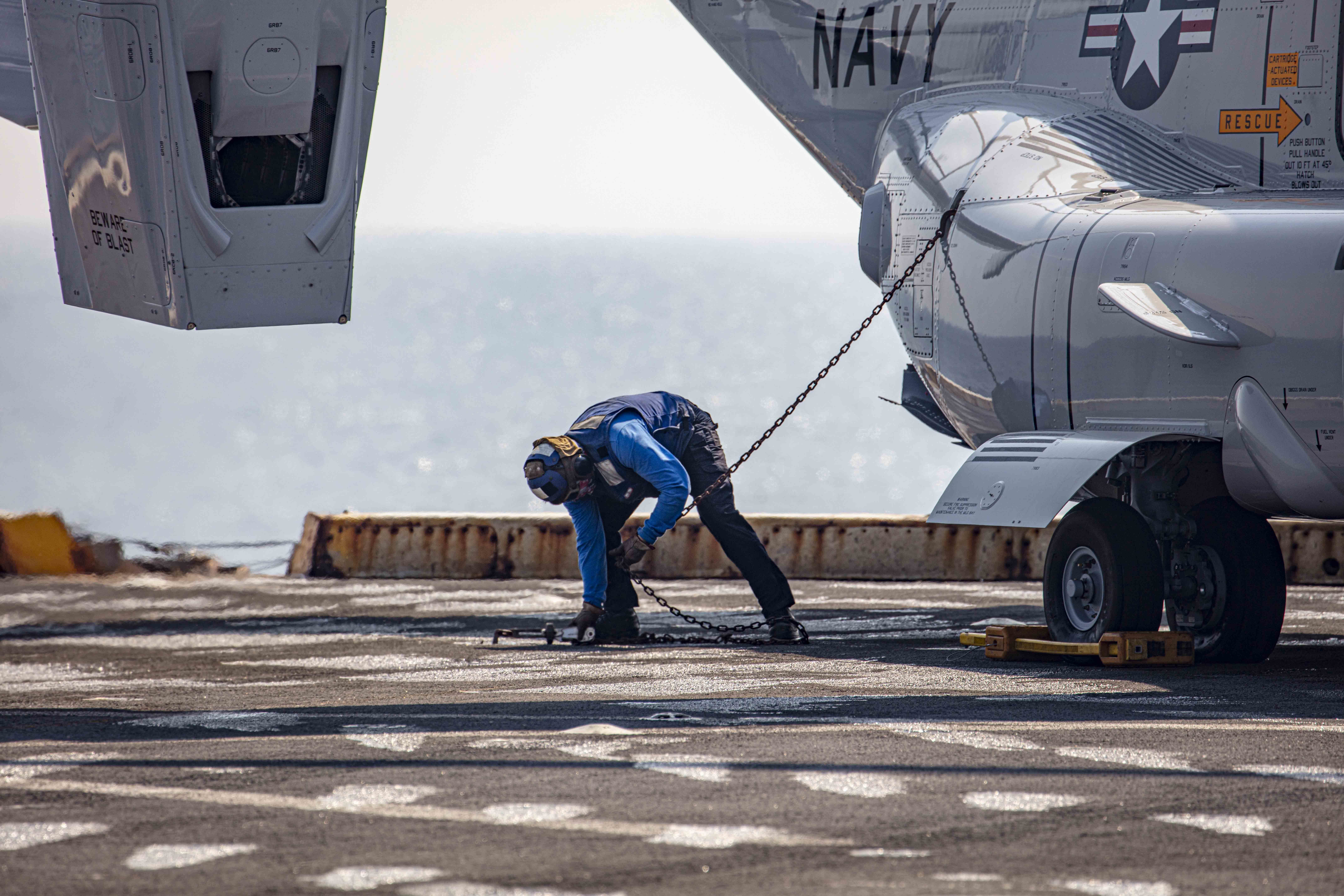

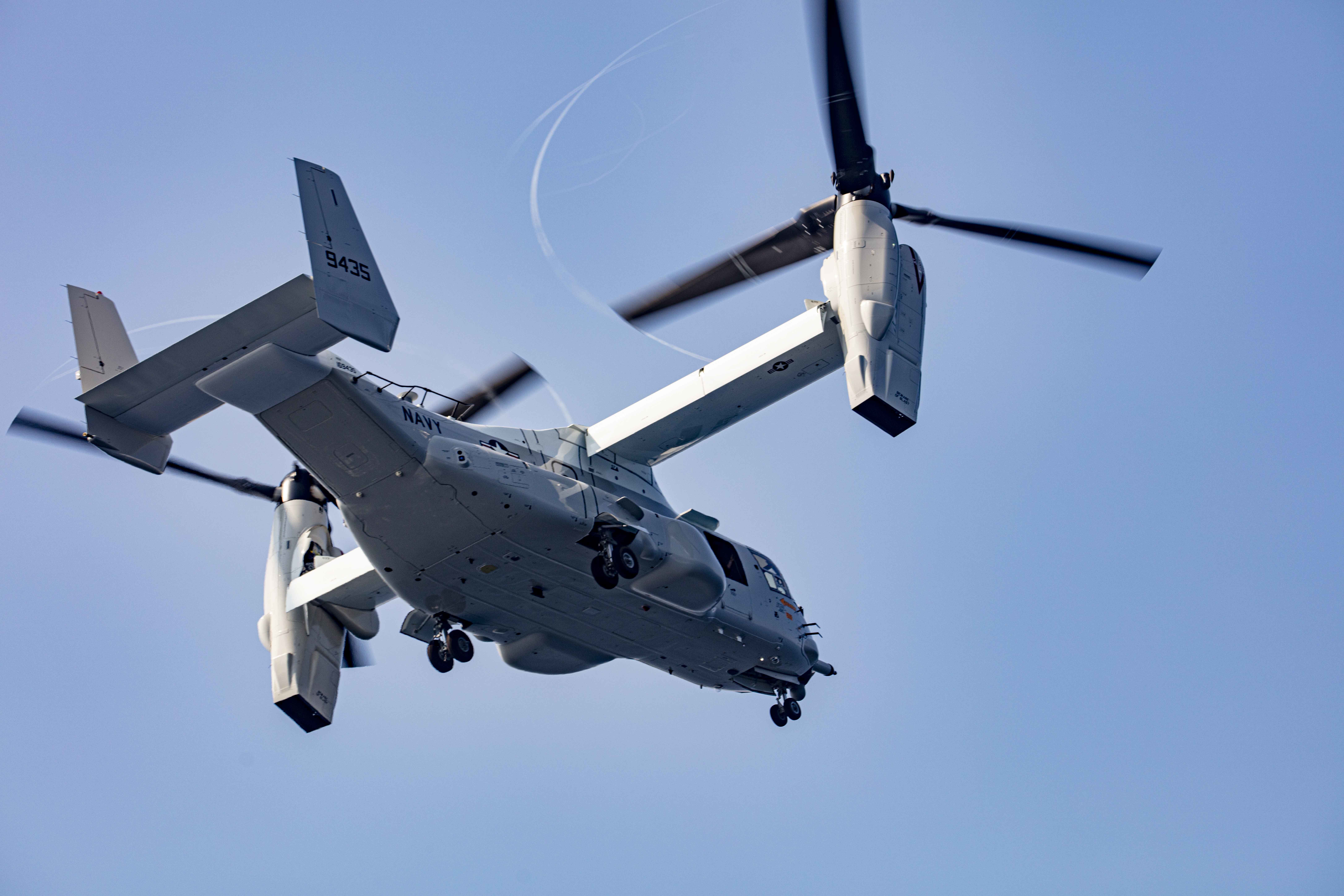
By Sophie Pearse
A Melbourne-based Joint Strike Fighter (JSF) component supplier has used a government grant to boost its production.
A.W. Bell is leading the way in global defence competitiveness by investing in a ground-breaking system at its Dandenong South casting facility.
The company has transformed its casting operation through an “Industry 4.0 Smart Factory”, which aims to lift production cycle times and output and provide superior quality control in its manufacturing processes.
The company made the operational change after receiving one of three Defence industry JSF grants in June, under the New Air Combat Capability – Industry Support Program.
The Chief Executive Officer of A.W. Bell, Sam Bell, said the Industry 4.0 Smart Factory integrated new digital and physical technologies to streamline factory operations, while increasing product effectiveness and reducing work health and safety concerns.
“Our Smart Factory has digitised production management across the foundry and production machining operations, from the receipt of raw materials through to delivery of final components,” Mr Bell said.
“In a technological first for an Australian foundry, our world-leading autonomous robotics used for component coating enables full automation of the production line and continuous monitoring of our operations in real-time.
“It embeds the digital monitoring of components at individual steps in the manufacturing chain, creating a serialised record of each part at every processing point, achieving the highest compliance with global aerospace traceability standards.”
Mr Bell said the company’s new production line system captured data to streamline planning and quality control, which ensured a digitally controlled, flexible and responsive operation.
The Director General of Defence’s Joint Strike Fighter Branch, Air Commodore Damien Keddie, said the venture had furthered A.W. Bell’s global competitiveness in the JSF supply chain.
“This leap in production technology has allowed A.W. Bell to expand its capabilities and global cost competitiveness in other aerospace, defence and commercial contracts worldwide and beyond the F-35 Program,” Air Commodore Keddie said.
This article was published by the Australian Department of Defence on July 17, 2020.
The featured photo: A.W. Bell’s Steve Bahr and Dan Biddle pour a casting at the company’s Melbourne foundry.